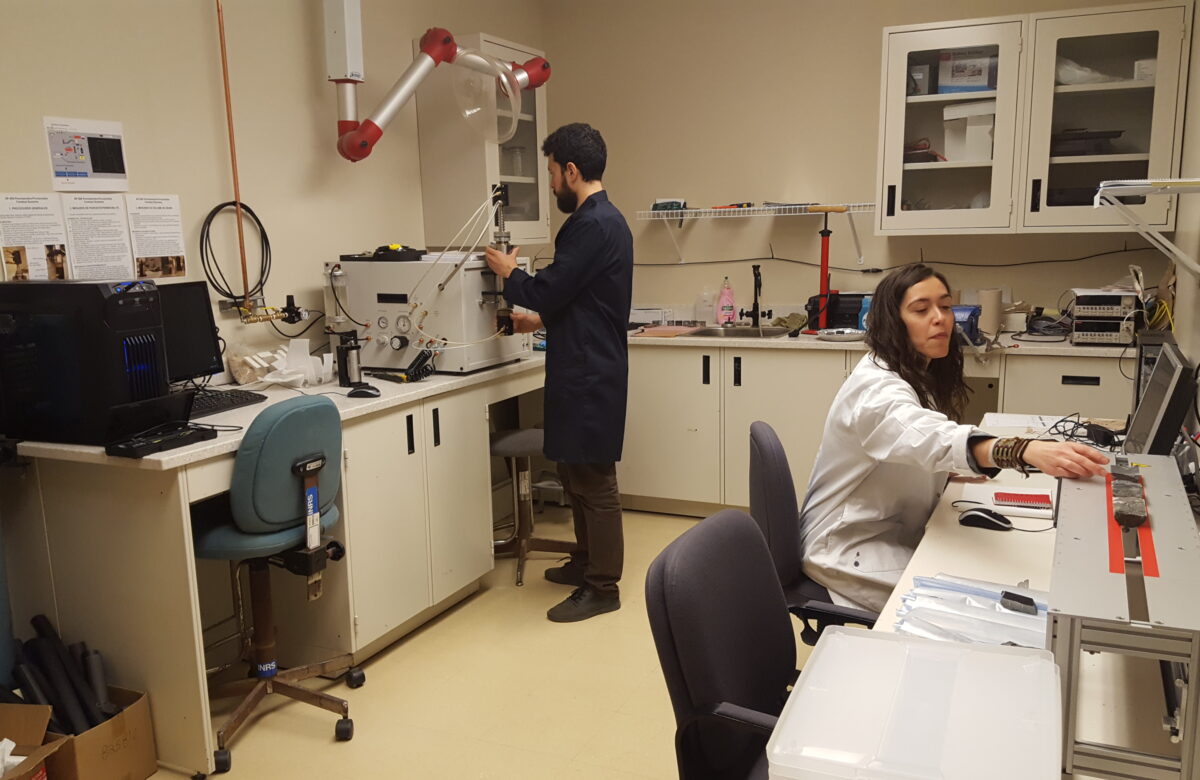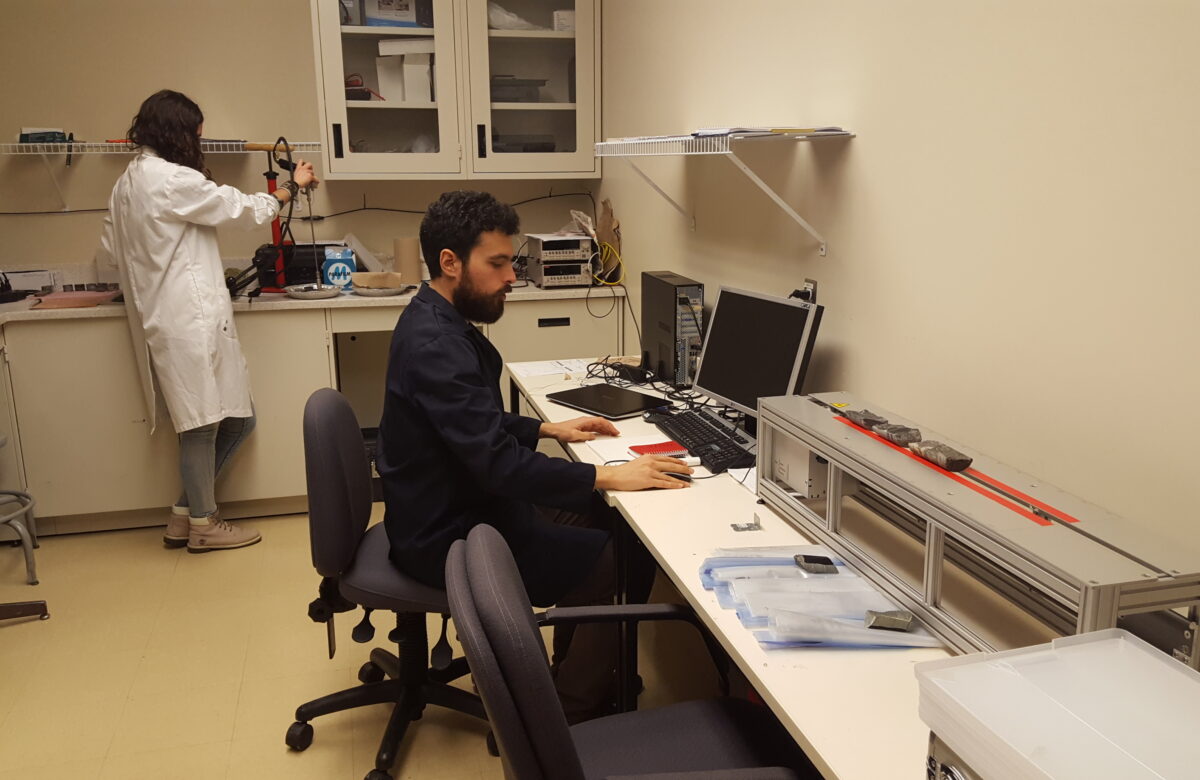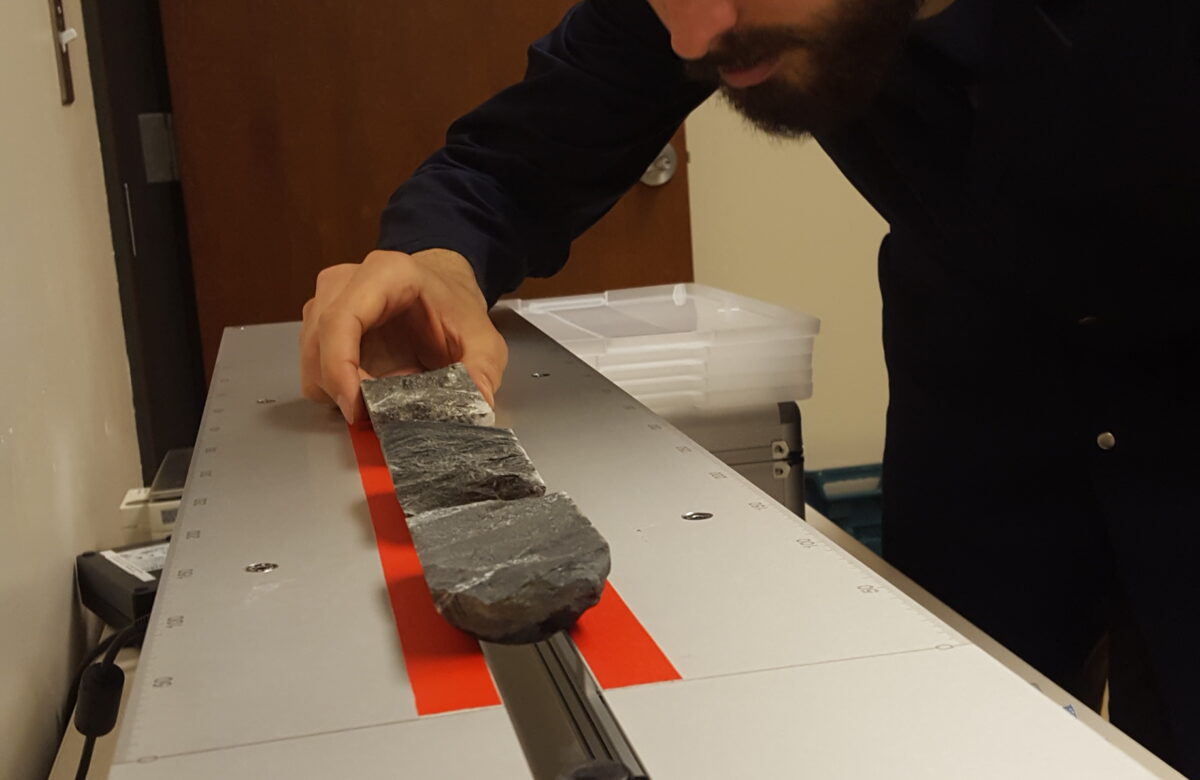- Home
- Research
- Research Facilities
- Find a Research Facility
- Geothermal Open Laboratory
The research conducted at the Geothermal Open Laboratory is aimed at gaining better understanding of underground heat transfer and flow phenomena for reducing technical risks of geothermal energy. It is an open access laboratory, modeled after open-source software.
The Geothermal Open Laboratory is used to measure the thermal and hydraulic properties of geological materials to model the impact of subsurface heterogeneity on the performance of geothermal systems of all kinds. The results of the analyses are recorded in a database on the thermal and hydraulic properties of different types of rock available on the Web three years after the analyses.
The Open Geothermal Laboratory is equipped with:
Drill press
MDP-405, CoreTest
The drill press is used to cut rock samples in cores of 1.0, 1.5 and 2.0 ” diameter and up to 4.5″ in length.
Dual Trim Saw with End Face Grinder
DTS-430, CoreTest
The double cut saw is used to prepare 1.5, 2 and 3.5 ” thick plugs with parallel ends. A grinder is also part of the system to smooth the ends of the samples.
Thermal conductivity scanner
TCScan, Lippmann Geophysikalische Messgeräte
This infrared scanner measures the thermal conductivity and thermal diffusivity using infrared optical scanning. Local measurements, made without contact and along scan axes, allow to evaluate the distribution of thermal properties and to quantify the heterogeneity.
Portable electronic divided bar
PEDB Mk II, Hot Dry Rocks
This tool measures the thermal properties of rocks by determining the ratio between the thermal gradient across the rock and that across the known material under steady-state conditions. The PEDB can also be used in a ‘transient’ mode to measure volumetric heat capacity.
TRT unit with heating cables
Made jointly by INRS and École de technologie supérieure (ÉTS)
The apparatus is used to conduct thermal response tests using a heating cable installed in boreholes to evaluate a thermal conductivity profile of the subsurface.
Combined permeameter and porosimeter
AP-608, CoreTest
The permeameter/porosimeter allow to evaluate the permeability and porosity of rock samples in drill cores under specific hydrostatic and stress conditions such as those encountered in underground reservoirs. The device uses helium to calculate these parameters.
Portable permeameter
PPP-250, Core Laboratories
The portable permeameter provides an accurate method for determining gas permeability in the field and in the laboratory. Measurements can be made on outcrops or drill cores. The pressure decrease of the air injected into the rock is measured as a function of time to calculate the permeability according to the transient methods.
All this equipment is complementary to the INRS CT scanner and can be used together to combine infrared scanning and X-ray techniques, a first for a geothermal lab.
 |
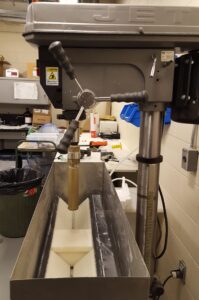 |
- Thermal conductivity: 0,2-25,0 W/m·K
- Thermal diffusivity: 0,6-3,0 10-6 m2/s
- Sample: flat surface with a minimum diameter of 1,5″
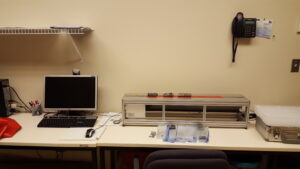 |
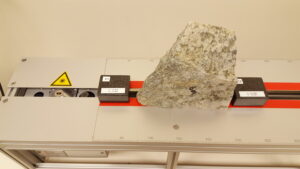 |
- Thermal conductivity: 0.5-12 W/m·K
- Samples of arbitrary shape up to 65 mm maximum width
- Thermal conductivity: 0,1-6,0 W/m·K
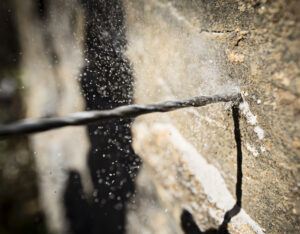 |
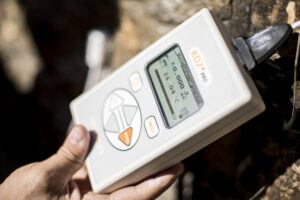 |
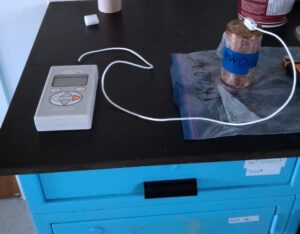 |
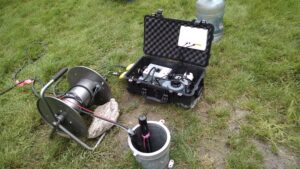 |
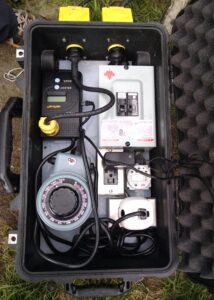 |
- Confining pressure: 500-10 000 psi
- Porosity: 0,1-40%
- Permeability: 0,001-10 000 mD
- Samples: core plug of 1 ou 1,5″ diameter and 1 à 4″ thickness
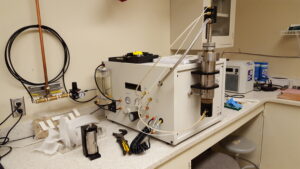 |
 |
 |
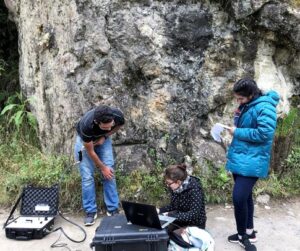 |
Independent and collaborative use of the lab’s equipment under the supervision of INRS staff is encouraged. Access to the lab is similar in spirit to open source software.
The instruments are made available to the entire scientific community. Researchers from outside INRS can perform their own analyses free of charge if they are willing to make their findings public three years after using the lab. The findings are recorded in a database made available on Google Sheets to create a public archive on the thermal and hydraulic properties of geological materials. Over time, this database will become a reference tool.
INRS staff can also prepare samples and perform analyses, but in that case, labour costs are charged. Access to the equipment itself is free in exchange for data sharing.
Please contact us for more information on our services.
Accurate characterization of thermal and hydraulic properties is required to develop complex heat transfer models. These mathematical models are used to simulate the operation of geothermal systems, from ground-coupled heat pumps for green buildings to deep reservoirs for power generation.
More specifically, the acquisition of new knowledge at the Open Geothermal Laboratory will be used to:
- Study environments favourable for both shallow and deep geothermal systems
- Improve the design of the underground components of geothermal systems
- Develop more cost-effective geothermal technologies
- Environmental hydrogeology
- Cold region geotechnics
- Geodynamics of the Earth
The Geothermal Open Laboratory: A free space to measure thermal and hydraulic properties of geological materials: Article (PDF) Presentation (PDF)
All analysis results carried out at the LOG are recorded in a database of thermal and hydraulic properties of different types of rock. The analyses will become public three years after their carry out date and will be available through Google Sheets.
-> Database Access
These facilities have been funded by the Canada Foundation for Innovation (CFI), the Government of Quebec, and the Fonds de recherche du Québec — Nature et technologies (FRQNT). The lab is supported by the Institut nordique du Québec. Work done in the lab is part of the INQ Reseach Chair on the Northern Geothermal Potential.
Research Partner: Institut nordique du Québec (INQ)
Contacts
Félix-Antoine Comeau
Laboratory Manager
Phone: 418-654-2652
felix-antoine.comeau@ete.inrs.ca
Jasmin Raymond
Professor and Scientific head
Phone: 418-654-2559
jasmin.raymond@ete.inrs.ca
Boutaina El Jai
Partnerships and Research Development Advisor
Phone: 418 654-2531
boutaina.el_jai@inrs.ca
Open Geothermal Laboratory (LOG)
Institut national de la recherche scientifique
Eau Terre Environnement Research Centre
490 rue de la Couronne
Québec City, Quebec G1K 9A9
Canada

